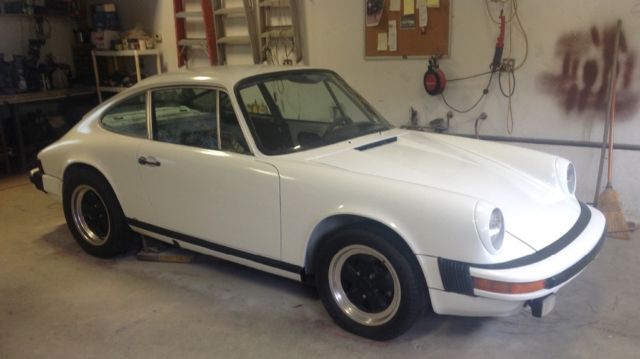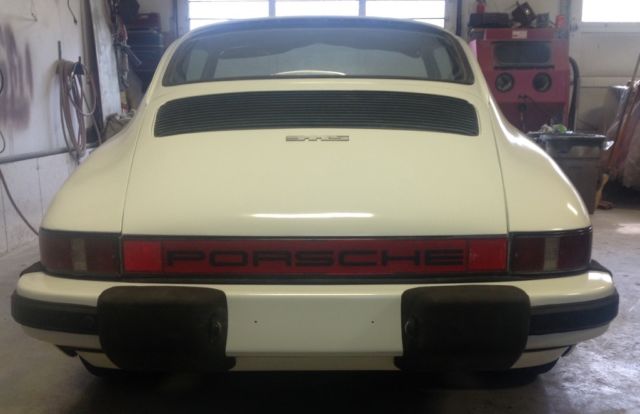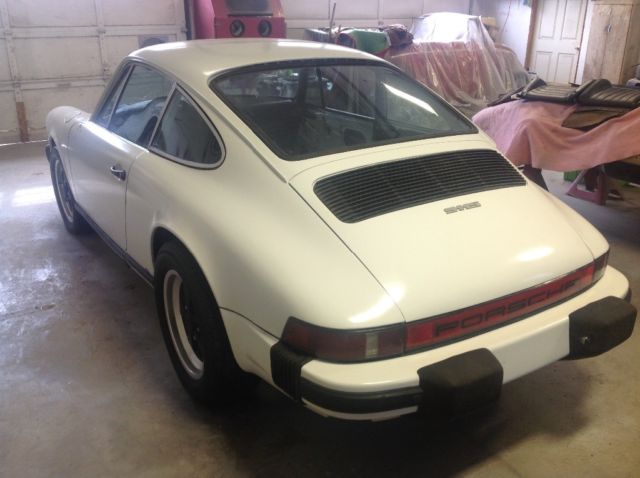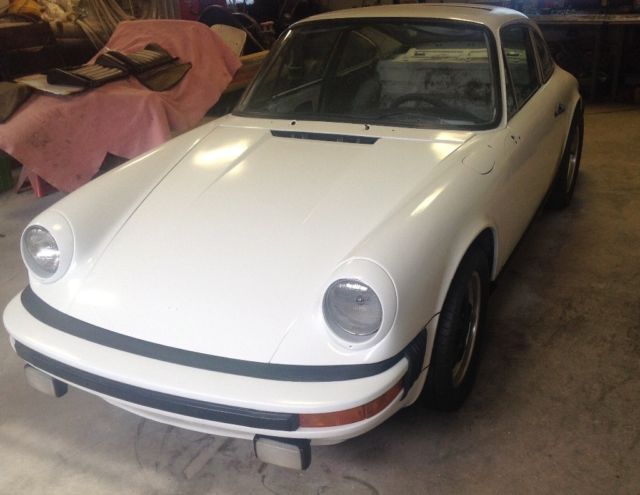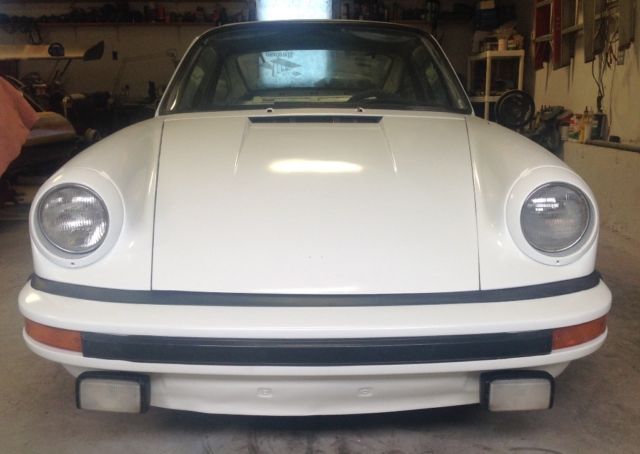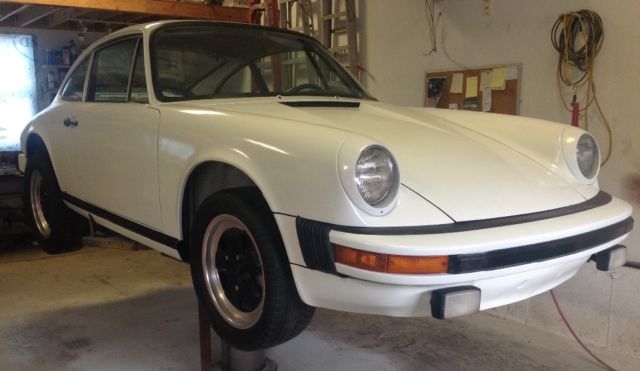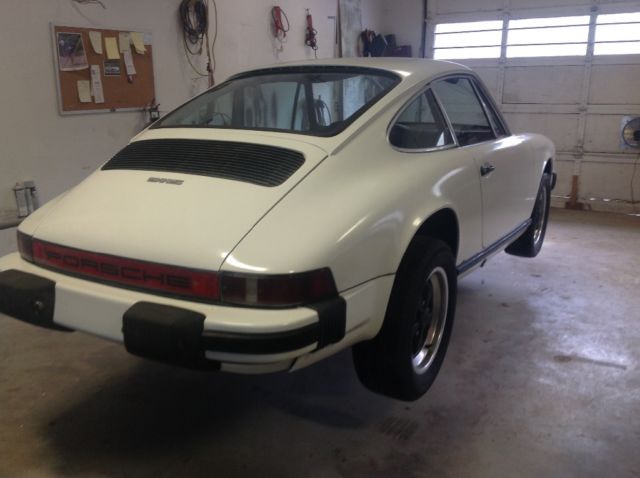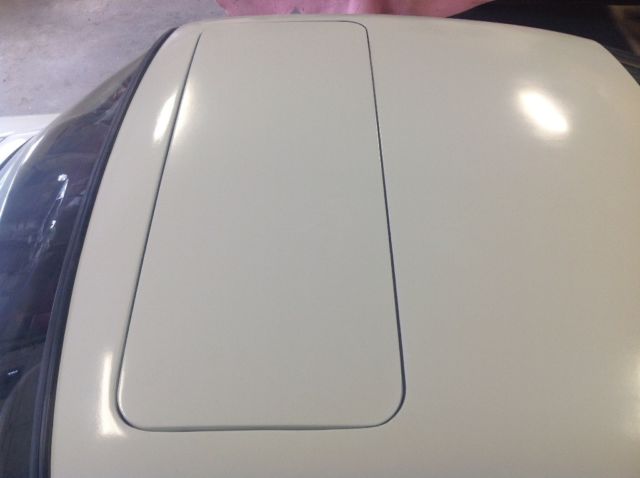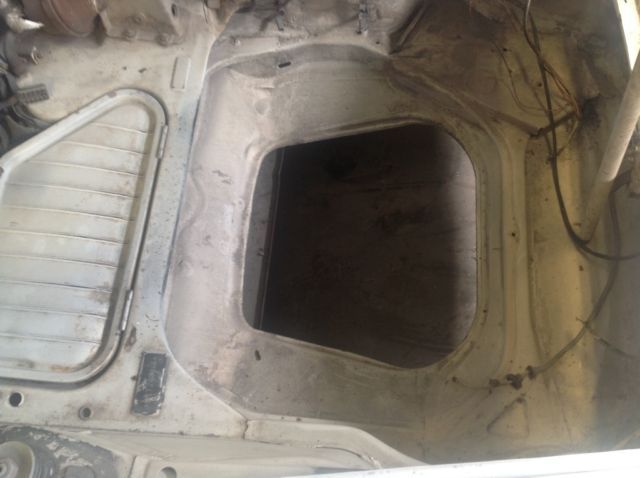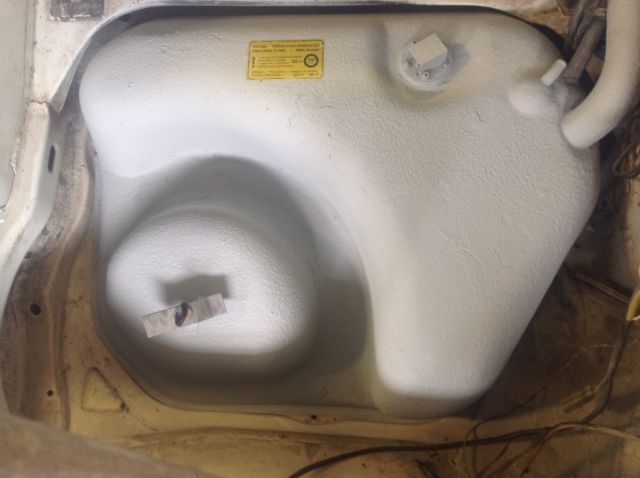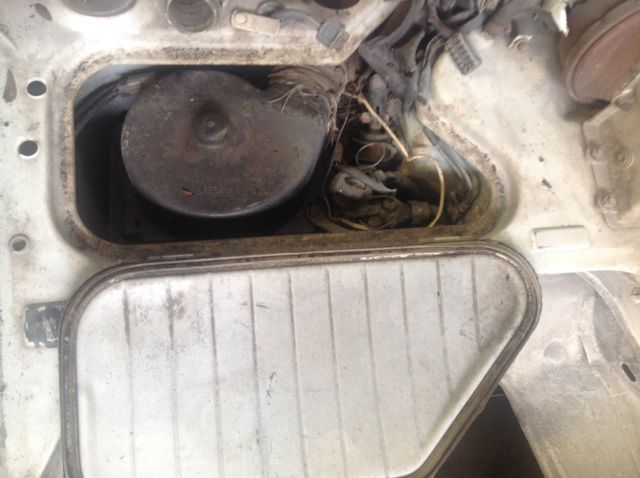1977 Porsche 911S
Technical specifications of Porsche 911 1977
| Price: | - |
|---|---|
| Item location: | Coopersburg, Pennsylvania, United States |
| Make: | Porsche |
| Model: | 911 |
| SubModel: | S |
| Type: | Coupe |
| Trim: | S |
| Year: | 1977 |
| Mileage: | 98,751 |
| VIN: | 9117202854 |
| Number of cylinders: | 6 |
| Power options: | Air Conditioning, Power Locks, Power Windows |
| Fuel: | Gasoline |
| Transmission: | Manual |
| Drive type: | RWD |
| Options: | Cassette Player, Leather Seats, Sunroof |
| Vehicle Title: | Clear |
| You are interested? | Contact the seller! |
Description
This listing is for a 1977 Porsche 911S with a standard shift transmission and a 2.7T engine. This sales goes with everything seen. As shown in photos there is NO rotting or rusting and chassis is solid and sound. Great project with an amazing turn around. Please serious and interested buyers only. Any questions or concerns please feel free to contact us at any time. We have included a bit of historical information on this vehicle as shown below.911 and 911S 2.7 (1973–1977)[edit]
Model year 1974 (G Series. Aug. 1973 to July 1974 production) saw three significant changes. First, the engine size was increased to 2687cc achieving highertorque. Second, new impactbumpersconformed with low-speed protection requirements of US regulations. Thirdly, the use of K-Jetronic CIS Bosch fuel injection in two of the three models in the line up— the 911 and 911S models, retaining the narrow rear arches of the old 2.4, now had a 2.7-litre engine producing 150PS (110kW; 150hp) and 175PS (129kW; 173hp), respectively.
Air-cooled engines (1963–1997)[edit]Porsche 911 classic (1963–1989)[edit]Porsche 911 of 1968Main article:Porsche 911 (classic)The 911 traces its roots to sketches drawn byFerdinand "Butzi" Porschein 1959.[10]The Porsche 911 was developed as a more powerful, larger, more comfortable replacement for thePorsche 356, the company's first model. The new car made its public debut at the 1963[1]Frankfurt Motor Show(German:Internationale Automobil-Ausstellung).[11]The car was developed with the proof-of-concept twin-fan Type 745 engine, and the car presented at the auto show had a non-operational mockup of the production single-fan 901 engine, receiving a working one in February 1964.[10]
It originally was designated as the "Porsche 901" (901 being its internal project number). 82 cars were built as 901s.[10]However,Peugeotprotested on the grounds that in France it had exclusive rights to car names formed by three numbers with a zero in the middle. So, instead of selling the new model with another name in France, Porsche changed the name to 911. Internally, the cars' part numbers carried on the prefix 901 for years.[10]Production began in September 1964,[11]the first 911s reached the US in February 1965 with a price tag of US$6,500.[10]
Porsche 912E with Fuchs wheels, 1969The earliest edition of the 911 had a 130metric horsepower(96kW; 128hp)[1]Type 901/01flat-6engine, in the "boxer" configuration like the 356,air-cooledand rear-mounted, displaced 1991cc compared with the 356's four-cylinder, 1582cc unit. The car had four seats although the rear seats were small, thus the car is usually called a2+2rather than a four-seater (the 356 was also a 2+2). It was mated to a four or five-speedmanual"Type 901"transmission. The styling was largely byFerdinand "Butzi" Porsche, son ofFerdinand "Ferry" Porsche.Erwin Komenda, the leader of the Porsche car body construction department, initially objected but later was also involved in the design.
The 356 came to the end of its production life in 1965, but there was still a market for a4-cylindercar, particularly in the USA. ThePorsche 912, introduced the same year, served as a direct replacement, offering the de-tuned version of 356 SC's 4-cylinder, 1582cc, 90hp (67kW) boxer four Type 616/36 engine inside the 911 bodywork with Type 901 four speed transmission (5 speed was optional).
In 1966, Porsche introduced the more powerful 911S with Type 901/02 engine, the power raised to 160PS (118kW; 158hp). Forged aluminumalloy wheelsfromFuchs, in a distinctive 5-spoke design, were offered for the first time. In motor sport at the same time, the engine was developed into Type 901/20 installed in themid-enginedPorsche 904andPorsche 906with 210PS (154kW), as well as fuel injected Type 901/21 installed in 906 and910with 220PS (160kW).
In Aug. 1967, the A series went into production with dual brake circuits and widened (5.5J-15) wheels, and the previously standard gasoline-burning heater became optional. TheTarga(meaning "plate" in Italian[12]) version was introduced. The Targa had astainless steel-clad roll bar, as Porsche had, at one point, thought that the U.S.National Highway Traffic Safety Administration(NHTSA) would outlaw fully openconvertiblesin the US, an important market for the 911. The name "Targa" came from theTarga Floriosports car road race inSicily, Italy in which Porsche had several victories until 1973. The last win in the subsequently discontinued event was scored with a 911 Carrera RS against prototypes entered by Ferrari and Alfa Romeo. The road going Targa was equipped with a removable roof panel and a removable plastic rear window (although a fixed glass version was offered from 1968).
The 110PS (81kW; 108hp) 911T was also launched in 1967 with Type 901/03 engine. The 130PS (96kW; 128hp) model was renamed the 911L with Type 901/06 engine and ventilated front disc brakes. The brakes had been introduced on the previous 911S. The 911R with 901/22 engine had a limited production (20 in all), as this was a lightweight racing version with thin fiberglass reinforced plastic doors, amagnesiumcrankcase, twin overhead camshafts, and a power output of 210PS (154kW).
The B series went into production in Aug. 1968 that replaced the 911L model with 911E with fuel injection, and remained in production until July 1969. 911E gained 185/70VR15 tires and 6J-15 wheels.
The C series was introduced in Aug. 1969 with enlarged 2.2L engine (84mm bore x 66mm stroke). Thewheelbasefor all 911 and 912 models was increased from 2211to 2268mm (87to 89¼in), to help remedy to the cars' nervous handling at the limit. The overall length of the car did not change, but the rear wheels were relocated further back. Fuel injection arrived for the 911S (901/10 engine) and for a new middle model, 911E (901/09 engine). Asemi-automaticSportomatic[13]model, composed of atorque converter, anautomatic clutch, and the four-speed transmission was added. It was canceled after the 1980 model year[14]partly because of the elimination of a forward gear to make it a three-speed.[14]
The D series was produced from Aug. 1970 to July 1971. The 2.2L 911E (C and D series) had lower power output of the 911/01 engine (155PS (114kW; 153hp) at 6200rpm) compared to the 911S's Type 911/02 (180PS (132kW; 178hp) at 6500rpm), but 911E was quicker inaccelerationup to 160km/h (100mph).
The E series for 1972–1973 model years (Aug. 1971 to July 1972 production) consisted of the same models, but with a new, larger 2341cc (142in³) engine. This is universally known as the "2.4L" engine, despite its displacement being closer to 2.3 litres. The 911E (Type 911/52 engine) and 911S (Type 911/53) used Bosch (Kugelfischer) mechanicalfuel injection(MFI) in all markets. For 1972 the 911T (Type 911/57) wascarbureted, except in the U.S. and some Asian markets where the 911T also came with (MFI) mechanical fuel injection (Type 911/51 engine) with power increase over European models (130HP) to 140 HP, commonly known as a 911T/E.
With the power and torque increases, the 2.4L cars also got a newer, stronger transmission, identified by its Porsche type number 915. Derived from the transmission in thePorsche 908race car, the 915 did away with the 901 transmission's "dog-leg" style first gear arrangement, opting for a traditional H pattern with first gear up to the left, second gear underneath first, etc. The E series had the unusual oil filler behind the right side door, with the dry sump oil tank relocated from behind the right rear wheel to the front of it in an attempt to move the center of gravity slightly forward for better handling. An extra oil filler/inspection flap was located on the rear wing, for this reason it became known as an "Oil Klapper", "Ölklappe" or "Vierte Tür (4th door)". This rare 1972 911 is considered highly collectable due to the small run of 1 year only cars produced.
The F series (Aug. 1972 to July 1973 production) moved the oil tank back to the original behind-the-wheel location. This change was in response to complaints that gas-station attendants often filled gasoline into the oil tank. In January, 1973, US 911Ts were switched to the newK-JetronicCIS (Continuous Fuel Injection) system fromBoschon Type 911/91 engine.
911S models also gained a smallspoilerunder the front bumper to improve high-speed stability. The cars weighed 1050kg (2315lb). The 911 ST was produced in small numbers for racing (the production run for the ST lasted from 1970 to 1971). The cars were available with engines of either 2466cc or 2494cc, producing 270PS (199kW; 266hp) at 8000rpm. Weight was down to 960kg (2166lb). The cars had success at the Daytona 6Hours, theSebring 12 Hours, the1000 km Nürburgring, and theTarga Florio.
